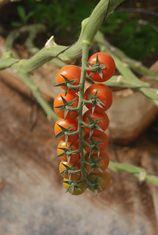
Years of investment in growing conditions and supplier relations have started to pay off for Morocco’s vegetable growers and exporters, who are gaining recognition for their high quality standards.
“We are now using the label of Morocco to attract customers,” says Driss Dehbi of Moroccan supplier Alternatives General Trading. “People are willing to pay even though we are more expensive than, say, the Netherlands. ”
Peter Davis, managing director of UK importer Davis Produce, has been impressed by Morocco’s development. “There has definitely been a change,” he says. “Up until two years ago, Moroccan tomatoes only sold if there was nothing else on the market. It has always been the Spanish that have led the way in the winter. What is changing is the cost; Morocco doesn’t have the euro and labour is cheaper. Add on the improvements in technology, with many large grower co-operatives taking on Dutch technical staff, and Morocco is going to be the one leading the way on winter salads.”
Morocco’s priority, according to Kacem Bennani-Smires, general manager of producer Delassus, is to maintain its position in its current markets and to continue to grow elsewhere. “The proposed setting-up of adequate logistical facilities will lead to a major evolution in the shipment of produce to countries in the east.”
Producers have also invested in diversifying tomato varieties and achieved a high level of professionalism. “Specialising in cherry tomatoes has made us the biggest producer-supplier in the Mediterranean. In the UK, we account for 30-50 per cent of the supermarkets’ needs. At Delasssus, we have planted an additional 50ha this year, with modern and environment-friendly facilities.”
Sustainability initiatives have been a key aspect of Delassus’ business in the past few years, with particular attention paid to water usage. “Water remains the top priority,” says Bennani-Smires. “In addition to closed hydroponic systems that allow us to recover and reuse any water that is not used by the plant, we have equipped our new greenhouses with a sloped roof-gutter system, which carries the rainwater to a collection tank. This type of greenhouse has other advantages. Sloped roofs capture the sun’s rays at the most beneficial time for plants. They also have full-length windows that allow better ventilation and temperature control.” -



